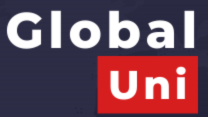Last summer, an academic was puzzled by why their students were suddenly acing the end-of-semester assessments. The usual quizzes were being returned faultlessly. Confident that the inclusion of images would thwart AI tools, the academic mentioned this to a colleague. The colleague’s reply landed with a thud: “You know large language models can work on images as well as text, right?”
Universities face a significant challenge, with tech giants poised to deploy AI-powered learning experiences that could substantially alter the current model. As access to expertise becomes widespread and traditional assessment models are tested by large language models (LLMs), what will distinguish and ensure the value of a university education? Success for universities will hinge on three things: clarity in the teacher-learner relationship, a well-defined institutional mission, and strategic approaches to learning delivery.
Piling up in the streets
We all know that in the era of generative AI and large language models, the usual assessment suspects are dead. The essay, still beloved of many, is perhaps only the most obvious corpse. If we’re serious about preventing widespread plagiarism, many other traditional assessment methods are also no longer viable. Of course, this potential for content generation is currently obsessing academics and managers — how do we stem a flood of “good honours” and the inevitable grade inflation that will catch the eye of the Office for Students? Yet, it’s almost certainly a mistake to approach this challenge from a purely deficit perspective. A more balanced, and perhaps more “academic” approach would give equal emphasis to generative AI’s potential for advancing knowledge and inspire us to develop authentic, AI-resilient modes of assessment.
A cottage industry is rapidly developing, promising to translate traditional assessments into supposedly generative-AI-proof formats. While freely available AI adaptive toolkits offer some superficial solutions, they greatly underestimate the power of current LLMs. For instance, replacing an essay with a task that asks for an AI-generated answer and a reflection on the AI’s usefulness naively assumes the AI can’t also generate the reflection.
Even that supposed bastion of plagiarism-proof assessment, the multiple-choice questionnaire, has been hacked. Websites like Virtual Professor offer a shockingly simple workaround: students merely hover over online test questions, and the correct answer magically appears. This underscores a key challenge — generative AI can significantly enhance students’ learning and assessment, but only if we move away from oversimplified, traditional modes and adopt more thoughtful and engaging frameworks.
Education first
Faced with the rise of generative AI, how must current higher education proactively rethink learning and assessment? The answers here are tentative and provisional, but they approach the challenge from an educational and strategic rather than purely technological perspective. This approach, we think, offers a productive path for institutional and educational planning.
The first cluster of propositions focuses on transparency in the relationship between academics and students. This involves an open compact between learner and teacher about learning goals and how they will be achieved. It entails clear expectations around students’ use of AI technology, matched by academics being equally transparent about their own use. This could mean learners documenting their “technology map” as part of their assessment — a map shared with teachers and potentially with peers. LLMs can also be used to assess students’ level of understanding and engagement, providing aggregated data at both programme and module level.
The second cluster of propositions centres on a holistic generative AI framework for learning and assessment, emphasising the relationship between institution, learners, and assessment. In this framework, content acquisition becomes less central, while formative assessment and discovery-led learning gain importance. Peer interaction and dialogue with teachers become key to the learning process, finally fulfilling the full promise of the flipped classroom. Learning with LLMs can be inherently engaging, encouraging students and teachers alike to explore through well-crafted natural language questions. Social learning becomes equally important as individual knowledge acquisition.
The third cluster of propositions centre on integrating LLM techniques, methodologies, and models across the university curriculum. LLMs must become a core part of the educational experience, understood by learners, teachers, and everyone involved in supporting the learning process. This imperative grows with each new development in text, image, and voice generation — even the potential for AI-driven lessons delivered by simulated celebrities.
Fundamental overhaul
This formidable challenge finds most universities unprepared. It requires a fundamental overhaul of education strategies and the entire student experience. Success demands clarity of strategic intent and execution, along with significant commitment, investment, and time — resources many universities currently lack. Educators must rethink their approach, as students will demand nothing less. Staff will need comprehensive support in understanding and deploying LLM methodologies, a task that also requires commitment, investment, and time in the face of rapid development. Ignoring the transformative power of LLMs risks the sustainability of the current higher education sector, as educational experiences are easily replicated by tech giants like OpenAI, Microsoft, AWS, and Meta.
In this context, a critical question arises: in the age of generative AI, how will universities provide unique value to learning? The answer lies not in replicating teaching methods or assessment techniques, as these can be easily matched by other providers. The true value lies in expertly guiding interactions between learner, teacher, and LLM. Universities, with their expertise and commitment to knowledge advancement, are uniquely positioned to lead this transformation. The continued relevance of higher education hinges upon their success.




